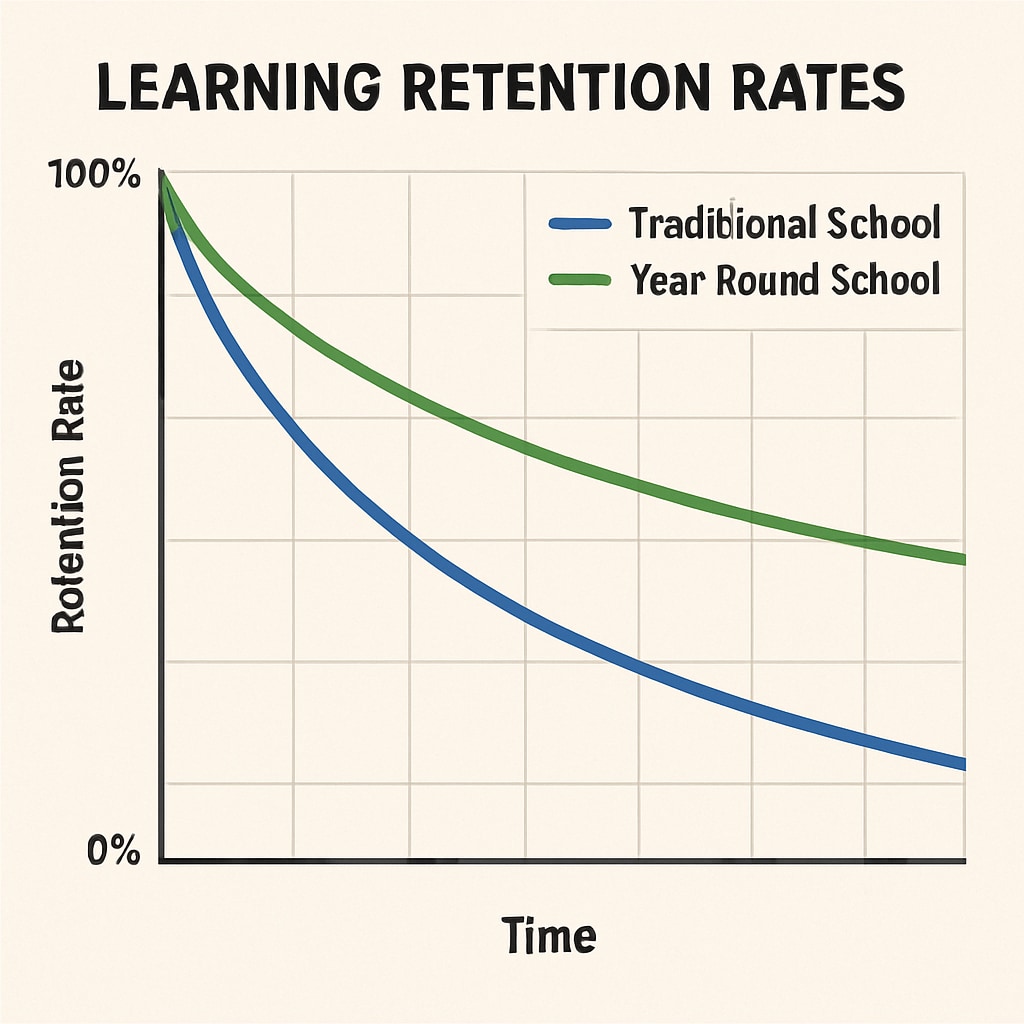Traditional school calendars, with long summer breaks, have been a cornerstone of education systems for centuries. However, research increasingly highlights the drawbacks of this model, particularly concerning learning retention. Year-round school systems, characterized by shorter, more frequent breaks like the “one week on, one week off” model, offer a promising alternative to combat the phenomenon of summer learning loss. This article delves into the potential benefits of year-round education from cognitive science, practical implementation, and societal perspectives.

Understanding Learning Loss and the Case for Year-Round Schooling
Learning loss, especially the “summer slide,” refers to the decline in knowledge and skills students experience during extended breaks. According to Edutopia, students can lose up to 30% of the knowledge gained during the previous academic year over the summer. This loss disproportionately affects students from disadvantaged backgrounds, exacerbating educational inequalities.
Year-round education, by eliminating long breaks, mitigates this issue. Shorter, evenly distributed breaks prevent prolonged periods of disengagement from academic content, ensuring that students retain a higher percentage of what they learn.
The Cognitive Science Behind Continuous Learning
Cognitive science underscores the importance of regular reinforcement in memory retention. The spacing effect—a phenomenon where information is better retained when study sessions are distributed over time—aligns perfectly with the year-round education model. Frequent breaks allow students to recharge without losing touch with their studies.
Furthermore, continuous schooling supports the brain’s ability to consolidate knowledge effectively. According to Britannica, memory consolidation is optimized when learning is consistent and uninterrupted by extended periods of inactivity.

Practical Benefits of Year-Round School Systems
From a logistical perspective, year-round schools can offer significant advantages:
- Reduced need for extensive review sessions at the start of each academic year.
- More opportunities for students and families to plan vacations during off-peak seasons.
- Improved utilization of school facilities throughout the year.
Additionally, students in year-round systems often report lower stress levels, as frequent breaks provide regular opportunities to rest and recharge. For educators, the model reduces burnout by distributing workload evenly across the year.
Addressing Societal Challenges and Implementation
While year-round education offers numerous benefits, it is not without challenges. Transitioning to this model requires addressing societal norms, such as traditional summer vacation schedules and childcare needs during breaks. Collaboration between schools, parents, and policymakers is essential to ensure smooth implementation.
Moreover, educational institutions must adapt curricula to align with shorter terms, ensuring that learning goals are met effectively. Despite these hurdles, the long-term benefits of higher learning retention and reduced inequalities make year-round schooling a worthwhile consideration.
In conclusion, year-round education represents an innovative approach to addressing the shortcomings of traditional school calendars. By prioritizing continuous learning and minimizing extended breaks, this model has the potential to enhance academic performance, reduce stress, and create a more equitable education system. As society evolves, embracing such forward-thinking solutions could be key to preparing students for a rapidly changing world.


